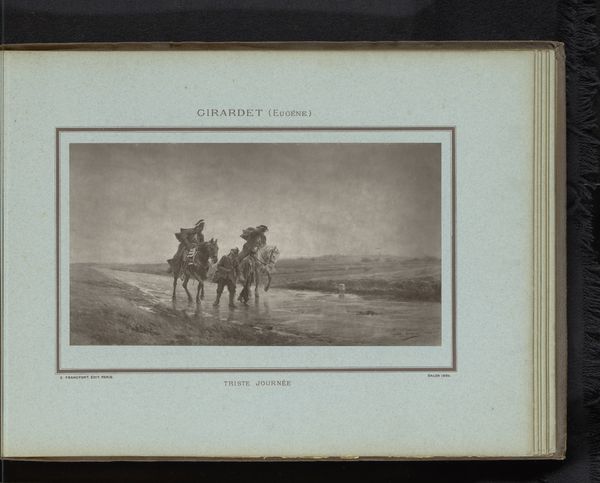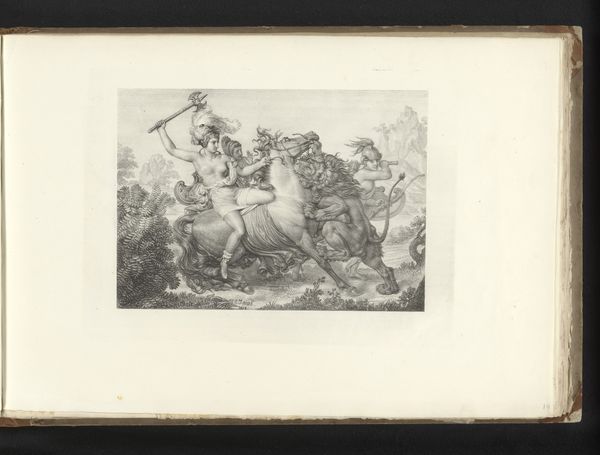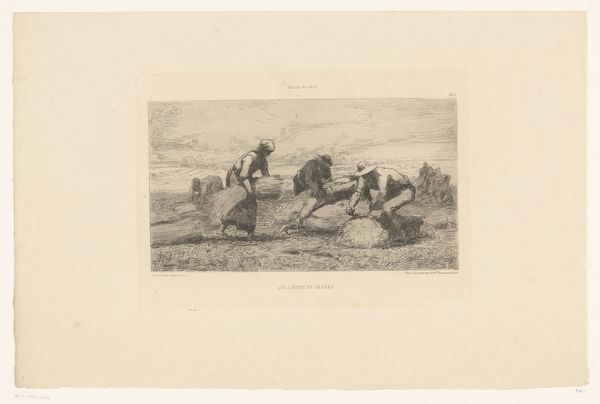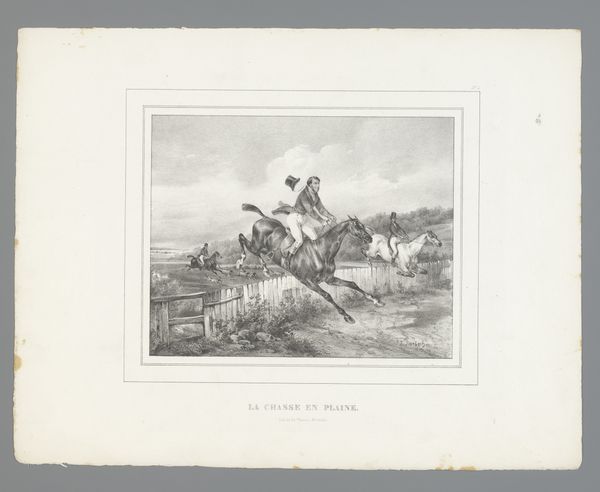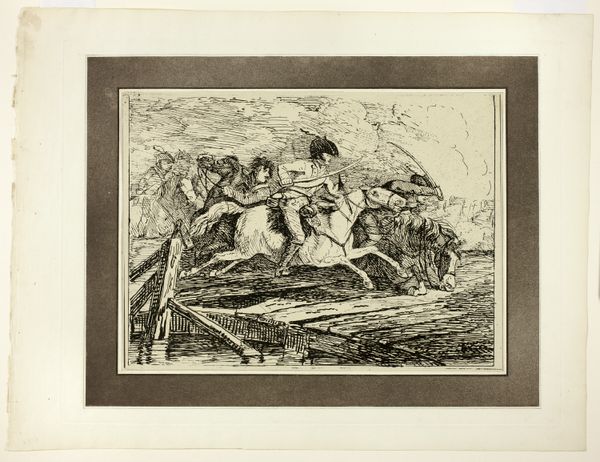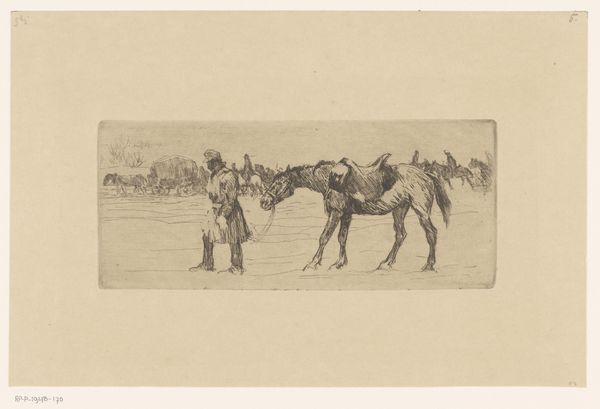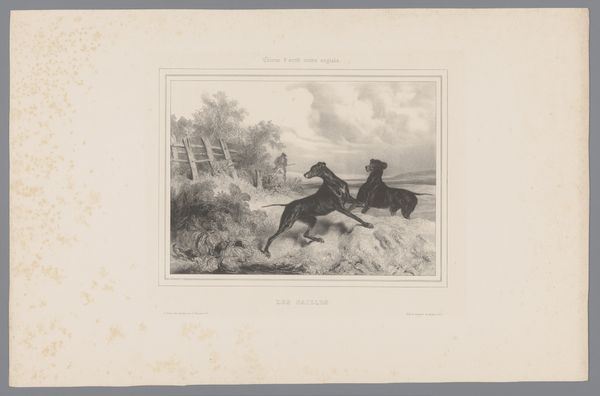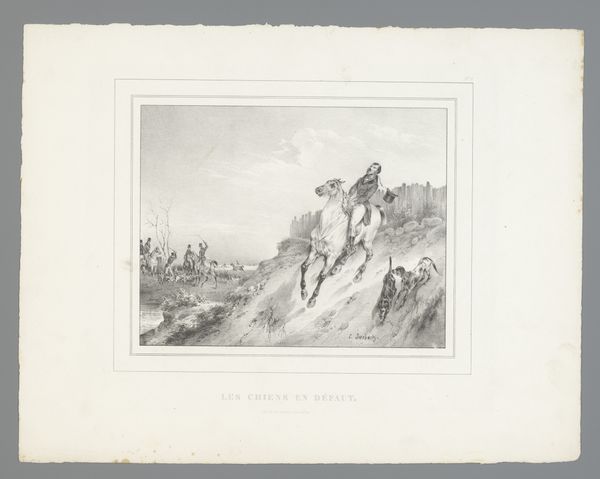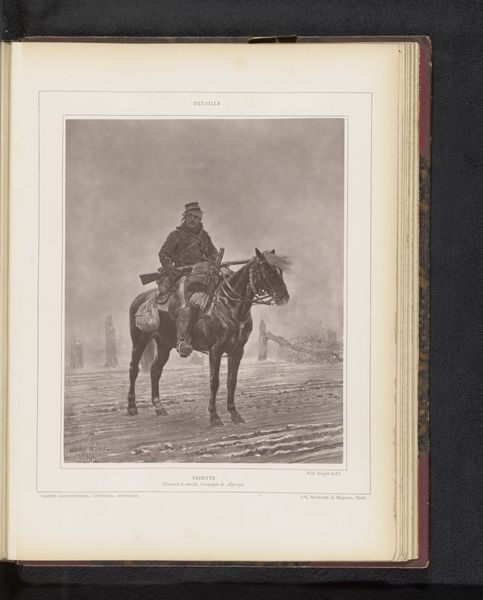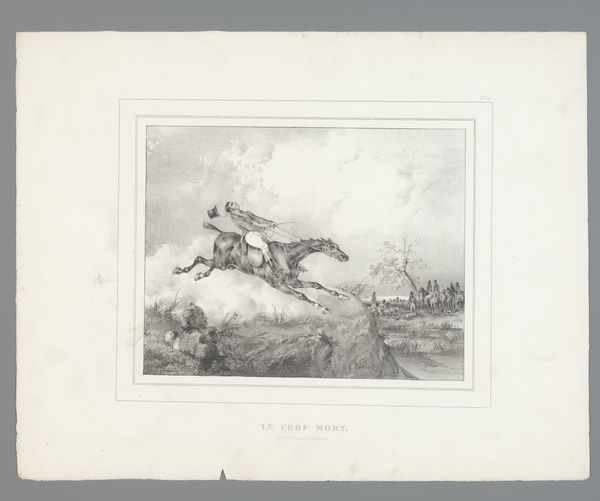
Reproductie van een schilderij van de vlucht van Gradlon door Evariste Vital Luminais before 1884
0:00
0:00
Dimensions: height 166 mm, width 256 mm
Copyright: Rijks Museum: Open Domain
Curator: This is a reproduction of a painting by Evariste Vital Luminais, dating from before 1884, and it depicts “The Flight of Gradlon.” It’s realized through printmaking techniques: etching and engraving. Editor: What a dramatic scene. The dark figures of the riders battling the rough sea make it feel overwhelming. It has a cinematic feel about it. Curator: Yes, that’s characteristic of much narrative-driven history painting of the Romantic era. Luminais often turned to episodes from Breton history and legend. Gradlon, here, was a legendary king of Brittany. Editor: So, what historical or political sentiments might the original painting express, especially within the context of its time? This seems like a potent metaphor for struggle and resistance. Curator: Undoubtedly, it resonates with themes of cultural identity and regional pride. We must remember that 19th-century France was a cauldron of regional, cultural, and political debates, particularly around defining French identity and power. These Romantic depictions offered heroic, sometimes tragic, narratives that explored Brittany's distinctive past, potentially resisting homogenization within a centralized French state. Editor: And that fleeing across turbulent waters reinforces a feeling of a last desperate escape. Who are the figures? It is clear that one of the figures is clutching someone or something. Curator: According to the legend, Gradlon is fleeing a flood. The figure he clutches is often said to be his daughter, or sometimes other figures central to Breton legends, depending on the version. Editor: This work speaks powerfully about resilience, the desperation of preserving a culture or lineage in the face of disaster. Considering that the legend is connected with natural catastrophes like floods, in our era the work could evoke feelings about ecological collapse. It speaks of the difficulty to save what is precious during environmental upheaval. Curator: Absolutely, and art like this also illuminates the ongoing use of historical narratives to engage with contemporary concerns. By understanding the historical roots of images like these, we gain a richer perspective on how collective identities are constructed and challenged across generations. Editor: It makes you think about which stories we continue to tell and what purposes they serve now. This piece becomes more resonant when thinking about how historical pieces connect to modern experiences.
Comments
No comments
Be the first to comment and join the conversation on the ultimate creative platform.
